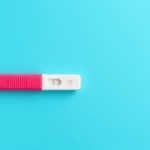Understanding Implantation Bleeding
Implantation bleeding occurs when a fertilized egg attaches itself to the lining of the uterus. This process typically happens about 6 to 12 days after conception. Many women experience light spotting during this time, which can easily be mistaken for menstrual bleeding. The color of implantation bleeding may range from pink to brown, and it’s usually much lighter in flow compared to a normal period.
Timing is crucial when considering pregnancy tests. Since implantation bleeding happens before most women even realize they are pregnant, understanding when it’s appropriate to take a pregnancy test can lead to a more accurate result. Typically, the best time to take a pregnancy test is about one week after experiencing implantation bleeding. This allows enough time for the pregnancy hormone, hCG, to build up in the body. Knowing how to interpret these signs is essential for early detection of pregnancy.
How to Identify Implantation Bleeding
Identifying implantation bleeding can sometimes be tricky, especially for those who are not familiar with the signs. Here are some key characteristics:
Understanding these characteristics can help women distinguish between implantation bleeding and the onset of their menstrual period. Accurate identification can also guide when to take a pregnancy test.
When is the Best Time to Take a Pregnancy Test?
The timing of a pregnancy test is vital for accurate results. The ideal time to take a pregnancy test is typically around one week after you have experienced implantation bleeding. This timing allows for the hormone human chorionic gonadotropin (hCG) to build up in your body, which pregnancy tests detect. Taking the test too early, before hCG levels rise, may lead to false negatives.
To ensure you get the most accurate results, follow these tips:
The accuracy of home pregnancy tests can vary, so consider repeating the test after a few days if the first test shows a negative result but you still suspect you may be pregnant.
What to Do After a Positive Pregnancy Test
If you receive a positive result, congratulations! It is essential to make an appointment with a healthcare provider as soon as possible for confirmation and to discuss next steps. Here are some immediate actions to consider:
Living a healthy lifestyle is crucial during this time to ensure both your well-being and that of your baby. Your doctor can help you navigate this exciting journey.
What Does Implantation Bleeding Mean for Your Cycle?
Implantation bleeding can significantly affect the typical menstrual cycle, particularly for women trying to conceive. If you experience spotting a week before your expected period, it may indicate early pregnancy rather than the arrival of your menstrual cycle. This can lead to confusion regarding timing and expectations for menstruation.
For women tracking their cycles, recognizing the difference can assist in planning and preparation. A missed period following implantation bleeding may solidify suspicions of pregnancy. Tracking symptoms and menstrual cycles can enhance your understanding of personal body patterns, making it easier to identify changes when they occur.
Women should be aware that not everyone experiences implantation bleeding. If you do not notice any spotting but still expect pregnancy, continue to monitor your symptoms and take a test if your period does not arrive on time.
Common Myths About Implantation Bleeding
There are several myths surrounding implantation bleeding that can create confusion. Here are some common misconceptions:
In fact, not all women have implantation bleeding, and it is typically light and short-lived. If you experience heavy bleeding or intense pain, it is important to contact a healthcare provider, as this may indicate other issues, such as an ectopic pregnancy.
Understanding these myths can provide a clearer picture of what to expect and alleviate unnecessary concern.
Tracking Your Symptoms for Better Accuracy
Monitoring your body’s changes is crucial when trying to conceive or if you suspect you may be pregnant. Keeping a journal to track your menstrual cycle, symptoms of ovulation, and any spotting can help you understand your body better. Note the timing, color, and flow of any bleeding, as this can aid in distinguishing between implantation bleeding and regular menstrual cycles.
Apps or menstrual cycle trackers can also assist, providing reminders for testing and ovulation windows. Having this information at hand can make discussions with your doctor more productive and informative, as you can provide accurate details about your cycle and symptoms.
Implantation Bleeding vs. Period: Key Differences
Understanding the differences between implantation bleeding and your menstrual period is essential. Here’s what to consider:
Recognizing these discrepancies can better prepare you for what to expect and when to take a test.
Final Thoughts
Understanding implantation bleeding and its timing in relation to taking a pregnancy test is crucial for anyone trying to conceive. Recognizing when implantation bleeding occurs can help differentiate it from a period, which is an essential factor when it comes to pregnancy testing. The right timing for a pregnancy test generally falls roughly a week after the occurrence of any implantation bleeding.
Every woman’s body is unique. Therefore, while some women may experience implantation bleeding and notice its characteristics clearly, others may not notice any signs at all. It is essential to stay informed and attentive to the body’s signals and symptoms. Keeping track of menstrual cycles and any unusual symptoms can aid in identifying potential pregnancy and provide clarity when it comes time for testing.
If you suspect you could be pregnant, be sure to take a test after the appropriate waiting period, and if you achieve a positive result, consult your healthcare provider for next steps. Healthy lifestyle choices, such as taking prenatal vitamins and engaging in regular medical check-ups, can help set the foundation for a healthy pregnancy.
In conclusion, being educated about these processes can empower you to make informed decisions regarding your reproductive health.
Frequently Asked Questions
Answer: Implantation bleeding is typically lighter, shorter, and may occur a week before your expected period. It often appears as pinkish or brown spotting.
Answer: The best time to take a pregnancy test is about one week after you experience implantation bleeding to ensure enough hCG is present for detection.
Answer: Yes, light spotting around a week before your expected period may indicate implantation and early pregnancy.
Answer: Heavy bleeding may signify other issues. If you experience heavy bleeding, it is essential to consult your healthcare provider immediately.
Answer: No, not all women experience implantation bleeding. Some may not notice any signs while others may see different forms of spotting.
Further Reading
What Type of Psychotherapy Is Best for Anxiety?







